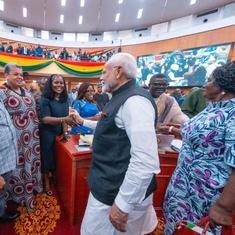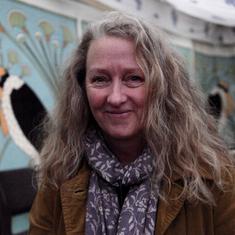Almost every major festival in India has some element of faith or religion to it. The Gregorian calendar, the Hindu solar calendar, and the Islamic lunar calendar keep us occupied with festivities and celebrations for a good part of the year. Without knowing, many of us schedule our holidays and downtime in synchronisation with three calendars. It would not be an exaggeration to say that even though the festivals have roots in religious traditions, their celebrations are mainly secular.
Take for example Diwali, Eid, or Christmas, and think about how they are celebrated. While the devout might scrupulously fulfil all traditional and religious demands of the festivals, others might only be interested in the merrymaking. This is a harmonious difference – everyone, including atheists, looks forward to new clothes, special feasts, and participating in social activities. In a way, festivals in India are also when we are at our most secular.
While Christianity is the world’s most popular religion, in India it occupies the third position after Hinduism and Islam. According to the 2011 census, 2.3% of Indians are Christians. In theory, therefore, Christmas is a festival of a minority community. And yet it has been adopted by Indians of all faiths. In the city of Kolkata, where I live, Christmas is synonymous with the Jewish bakery Nahoum and Sons’ famous Christmas cakes. They are relished by Kolkatans of all shades and hues year after year. This tiny bakery tucked in one corner of the city teaches crucial lessons on pluralism that we seem to forget in the course of the year.
The many Christmases of India
It is in this context that the collection Indian Christmas has to be read. Edited by Jerry Pinto and Madhulika Liddle, and with contributions from many prominent Indian writers, it is a heartwarming anthology on what Christmas means to Indians residing in metropolises as well as small villages. The anthology brings together vignettes of celebrations among Christians of different communities, Hindus, and Adivasis; photographs of festivities from different pockets of the country; and songs and poetry written in regional languages celebrating the birth of Jesus. Christmas in India contains multitudes.
But what makes Christmas so special? As Pinto writes in the introduction, and we all agree, any birth is beautiful and makes the world seem like a generous, beautiful place that is “full of promise and hope.” In her essay, Nirupama Dutt points to the inherent feminist nature of Christmas when she writes, “For this is a birth, and women understand birth more than anyone else, understand that this is the present and the future – this could be Hope, and it must be protected and celebrated.” The arrival of Jesus, among other things, is a celebration and acceptance of all life.
Anupama Raju cheekily remarks that baby Jesus must have been born in the kitchen. I will say that not just Jesus, but all gods were. Perhaps men momentarily stepped into the kitchen to conceive festivals and left after burdening women with the responsibility of ensuring everyone was well-fed as celebrations raged outside. The contributors to Indian Christmas reminisce about the elaborate Christmas feasts that are laid out every year. Raju recalls her mother’s famous “vindalee,” Liddle evokes the memories of her family’s special “cake ki roti,” and Jaya Bhattacharji Rose shares a Christmas cake recipe that uses 20 eggs.
Like every festival in India, Christmas feasts have also been improvised and individualised for each family’s palette. The “Indianisation” of roasts and the introduction of local curries, sweets, and breads is indicative of the wonderful confluence of local food habits and age-old Christmas traditions. If you marvel at the diverse spread of sweets and savouries, wait till you read about Easterine Kire’s grandmother in Nagaland baking cakes in ammunition boxes left behind by the British troops.
As a Hindu, Damodar Mauzo writes about exchanging delicacies with his Christian neighbours on Chawath (Ganesh Chaturthi) and Christmas. The spirit of sharing and community that is preached by Christianity, and in fact by all religions, is meticulously upheld by women working in the kitchen. This Christmas, it will do us well to thank our mothers and grandmothers for all the meals they lovingly prepare for us.
Hansda Sowvendra Shekhar writes about celebrating Christmas at his school in Ghatshila, Jharkhand. In this copper township with a considerable Adivasi Christian population, Shekhar remembers the absence of Christians in his Catholic school’s Christmas celebrations, and how upper-caste, wealthy Hindus turned it into an elite space.
Mary Sushma Kindo, a resident of Simdega Sawai, Jharkhand talks fondly of the “girja” in her village which is just a big, open-air verandah surrounded by trees on all sides. These stories give us a glimpse into how Christmas is celebrated in small towns and villages far from the glittering revelries of Mumbai and Kolkata.
Unity in diversity
Despite the atmosphere of celebrations and joviality, it is hard to ignore the recent attacks on Christians and churches in several parts of India or how right-wing vigilante groups have harassed Church staff members by accusing them of “forced conversions” of Hindus. The concerns surrounding India’s pluralism and enthusiasm for celebrating festivals of all faiths loom heavy on our conscience.
Mauzo, 78, remembers a time from a few decades ago when “no one cared who was Christian or Hindu or Muslim.” He reminds the younger generation that this feeling of brotherhood is our “inheritance and treasure.” And since our calendars are crowded with festivals that everyone looks forward to and participates in, shouldn’t we be the ones to show the world how to respect all faiths and live together in peace?
As Christmas Day comes round and another year draws to an end, we must remind ourselves what every faith and its celebrations teach us – as Mauzo puts it: “to learn to hold each other, to respect the traditions of unity and amity, and keep intolerance and religious hatred at bay.” Christmas belongs to every Indian and ’tis the season to renew our promise to each other to live as one. Merry Christmas, and a Happy New Year!

Indian Christmas: Essays, Memories, Hymns, edited by Jerry Pinto and Madhulika Liddle, Speaking Tiger Books.










